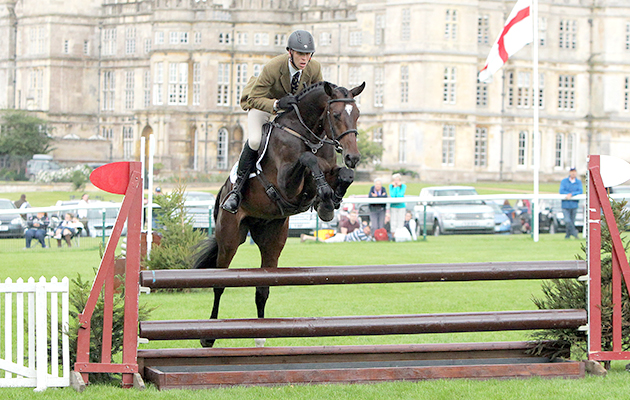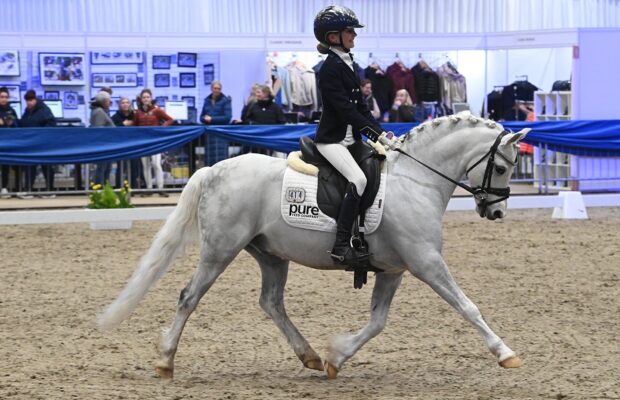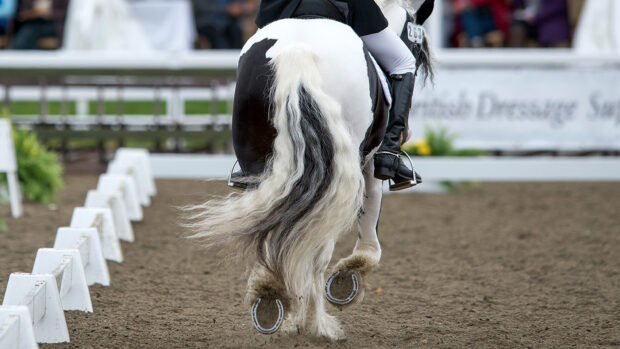Top showjumpier David Simpson (pictured) shares some of his advice on how to pick up the correct canter lead…
For me, the most important thing you can teach your horse is to carry itself rather than to constantly rely on the rider for balance. This idea is the foundation of many elements of training, but is also particularly useful when horses are learning how to pick up the correct canter lead.
In younger horses, you will often find they use the boundary of the sand school or ring to ‘lean’ into, which means they then fall out through the outside shoulder. This leads to a bigger issue when trying to jump a course. You will end up wide in your turns and it becomes difficult to get a consistent distance to the fence.
The sooner something like this is addressed, the easier it is to fix. The simplest way to do that is try not to just use the outside track of your sand school. With my younger horses, I try as much as possible to stay five metres off the fence line. This will naturally encourage them to carry themselves, working in straight lines rather than circles when first teaching them the basics of dressage. While doing this, try to keep a light hand. Rather than pulling to ‘carry’ or ‘lift’ them, use downward transitions, particularly downwards to halt, to lighten the front end carriage.
A key element here will be your patience. It won’t happen overnight, but as long as you stay consistent with your approach the horse will actually learn it quite quickly.
You may come across slightly older horses that don’t look to the railing for balance but to the rider’s hand instead. This often comes from my earlier point about riders being too strong with their hands when the younger horses are in the early stages of finding their balance — all they do in this case is learn to use the rider’s hand to lean on.
If you come up against this problem, it can be very simply fixed using transitions in your normal flatwork routine between both gaits and pace.
For example, pushing the trot out for 10 steps then collecting it for 10 will naturally move your horse’s weight to its hocks, making them lighter in your hand.
Article continues below…
You might also be interested in:

#SundaySchool: the showjumping ‘gym’ with Holly Smith
The international showjumper talks us through this multi-fence workout which she uses with both her younger and more experienced horses

#SundaySchool: how to improve rhythm over fences
Event rider and coach Nick Gauntlett explains how you can use poles to dictate the rhythm that will give horse

#SundaySchool: Laura Renwick — how to improve jump-off turns

Subscribe to Horse & Hound magazine today – and enjoy unlimited website access all year round
To help you with this type of training, place two poles 22 steps apart. Add two poles as ‘tram lines’ before the first pole, two more tram lines in the middle and another two after the second pole. This will ensure straightness as you move through the exercise. All you do from here is come through the poles, counting five strides between the first and second. Once the horse has mastered that, and is able to remain straight throughout, ask for six strides between the poles, encouraging them to become lighter in your hand. Once you have a horse going in this light, straight and balanced way, the always finding correct canter lead will come much more naturally and easily.
Would you like to read Horse & Hound’s independent journalism without any adverts? Join Horse & Hound Plus today and you can read all articles on HorseandHound.co.uk completely ad-free




